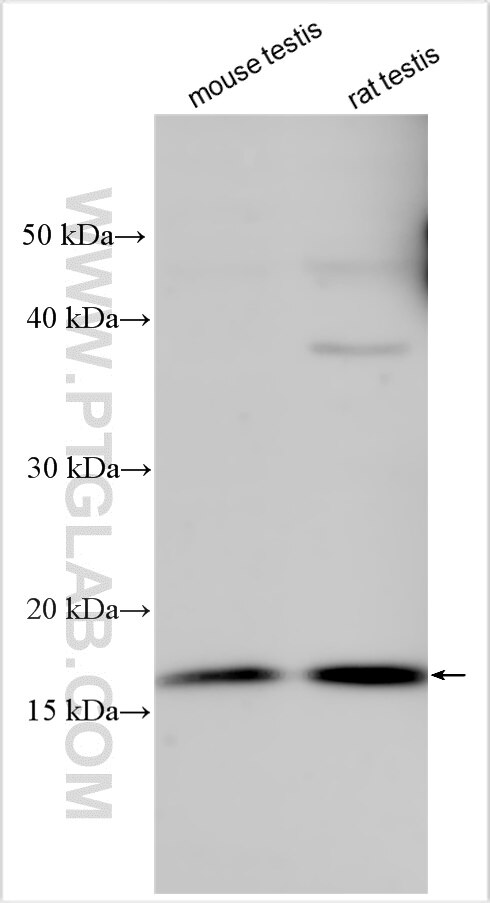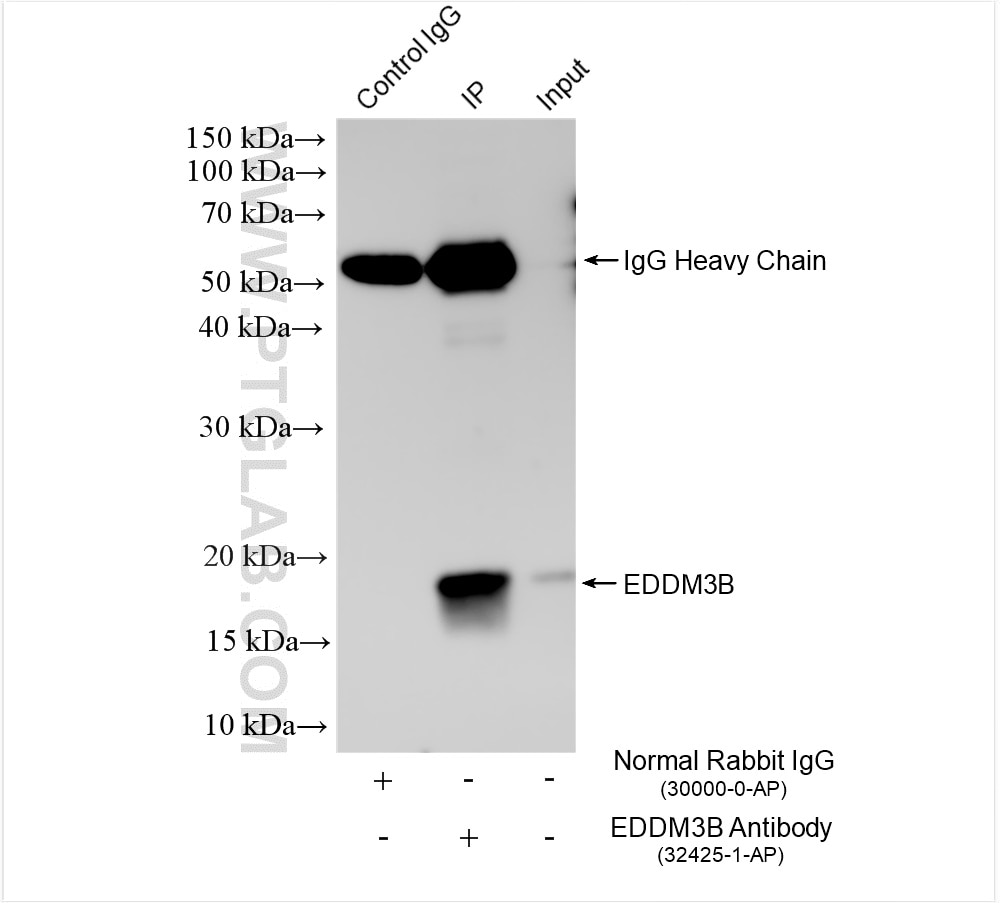Tested Applications
| Positive WB detected in | mouse testis tissue, rat testis tissue |
| Positive IP detected in | human testis tissue |
Recommended dilution
| Application | Dilution |
|---|---|
| Western Blot (WB) | WB : 1:1000-1:4000 |
| Immunoprecipitation (IP) | IP : 0.5-4.0 ug for 1.0-3.0 mg of total protein lysate |
| It is recommended that this reagent should be titrated in each testing system to obtain optimal results. | |
| Sample-dependent, Check data in validation data gallery. | |
Product Information
32425-1-AP targets EDDM3B in WB, IP, ELISA applications and shows reactivity with human, mouse, rat samples.
| Tested Reactivity | human, mouse, rat |
| Host / Isotype | Rabbit / IgG |
| Class | Polyclonal |
| Type | Antibody |
| Immunogen | EDDM3B fusion protein Ag37630 Predict reactive species |
| Full Name | family with sequence similarity 12, member B (epididymal) |
| Calculated Molecular Weight | 17 kDa |
| Observed Molecular Weight | 18 kDa |
| GenBank Accession Number | NM_022360 |
| Gene Symbol | FAM12B |
| Gene ID (NCBI) | 64184 |
| Conjugate | Unconjugated |
| Form | Liquid |
| Purification Method | Antigen affinity Purification |
| UNIPROT ID | P56851 |
| Storage Buffer | PBS with 0.02% sodium azide and 50% glycerol , pH 7.3 |
| Storage Conditions | Store at -20°C. Stable for one year after shipment. Aliquoting is unnecessary for -20oC storage. 20ul sizes contain 0.1% BSA. |
Background Information
EDDM3B (Epididymal secretory protein E3-beta), also known as FAM12B, HE3B (Human epididymis-specific protein 3-beta), is highly enriched in the epididymis and is involved in the secretion of glycoproteins that interact with sperm membranes.
Protocols
| Product Specific Protocols | |
|---|---|
| WB protocol for EDDM3B antibody 32425-1-AP | Download protocol |
| IP protocol for EDDM3B antibody 32425-1-AP | Download protocol |
| Standard Protocols | |
|---|---|
| Click here to view our Standard Protocols |





